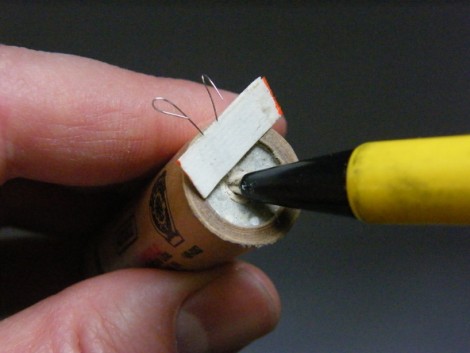
[Valentin] is the MacGyver of model rocketry, building a small rocket out of three items many people have hanging around the house. Cat litter, matchsticks, and a ballpoint pen are the raw materials that he rounded up before setting to work on the build.
The housing of the ballpoint pen will act as the body of the rocket. [Valentin] stuffed the tip of the pen with cat litter, creating the first part of the fuel chamber. Next, the heads of the matches were very carefully muddled into a fine powder which fills the bulk of the pen housing. Finish this off with another plug of cat litter and you’re almost done. The final step is to drill a hole through the plug layer at the tip of the pen, creating a nozzle to focus the force as the fuel burns.
From the videos we’d say there needs to be some work done as far as rocket guidance, but the solid state fuel certainly does work. Just remember to make your personal safety the first priority when working with combustibles like this!
Wondering how to launch something like this? Here’s a way to make your own igniters.




















